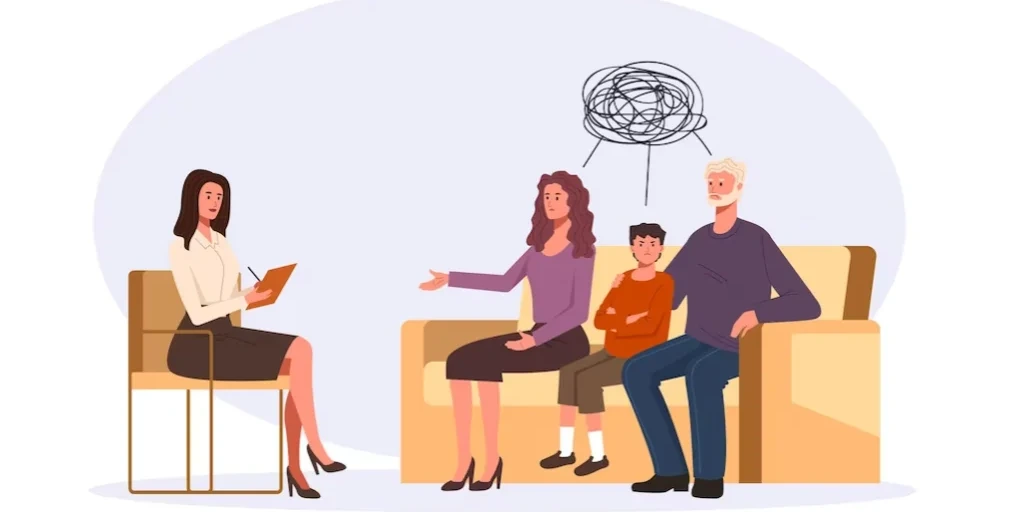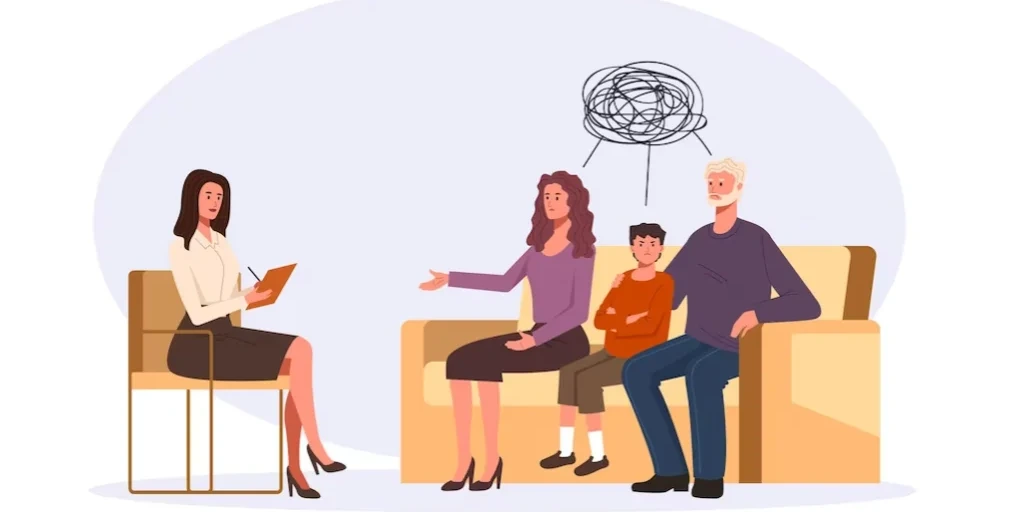24/7 Helpline:
(866) 899-221924/7 Helpline:
(866) 899-2219
Learn more about Cocaine Rehab centers in Austin
Cocaine Rehab in Other Cities

Other Insurance Options

MVP Healthcare

UMR

American Behavioral

Multiplan

Optum

Cigna

Health Partners

PHCS Network

CareSource
Beacon

Sliding scale payment assistance

Molina Healthcare

Premera

Ambetter

Optima

CareFirst

Choice Care Network

Highmark

Access to Recovery (ATR) Voucher

Health Choice

Recovery Unplugged – Austin Detox
Recovery Unplugged provides comprehensive, evidence-based and musically focused drug and substance a...

Austin Travis County Mental Health – Substance Abuse Specialized Services
Austin Travis County Mental Health – Substance Abuse Specialized Services is a private rehab located...

Phoenix House of Texas
Phoenix House of Texas is a public rehab located in Austin, Texas. Phoenix House of Texas specialize...

Clean Investments
Clean Investments is a private rehab located in Austin, Texas. Clean Investments specializes in the ...

Northwest Counseling & Wellness Center
Northwest Counseling & Wellness Center (NCWC) is a drug and alcohol center in Austin, Texas. NCWC de...

Addiction and Psychotherapy Services
Addiction & Psychotherapy Services (Aeschbach & Associates) has been serving the greater Austin area...

Clean Investments – Adolescent Program
Clean Investments – Adolescent Program is a private rehab located in Austin, Texas. Clean Investment...

The Right Step
The Right Step alcohol rehab and drug rehab offers outpatient addiction treatment. in the Right Step...

Travis County Integral Care – Child and Family Services
Travis County Integral Care - Child and Family Services is a counseling clinic rehab located in Aust...

Maintenance and Recovery Services – Ferguson Drive
Maintenance and Recovery Services - North Clinic is a private rehab located in Austin, TX. Maintenan...

Hill Country Counseling
Hill Country Counseling is a private rehab located in Austin, Texas. Hill Country Counseling special...

Austin Drug and Alcohol Abuse Program – ADAAP
Austin Drug and Alcohol Abuse Program – ADAAP is a private rehab located in Austin, Texas. Austin Dr...

POPPS – Prudent Opiate Practices & Psychological Services
Prudent Opiate Practices & Psychological Services (POPPS) is an outpatient clinic for treating drug ...

Seton Mind Institute Behavioral Health
Seton Mind Institute Behavioral Health offers outpatient services for children, young adults, adults...

Infinite Recovery
Infinite Recovery combines empowering therapeutic techniques with no excuses milieu; they treat men ...

Recovery Unplugged – Austin
Recovery Unplugged–Austin is an integrative drug and alcohol rehab for adults in Austin, Texas. They...

Cenikor
Cenikor is one of the best addiction treatment centers in Austin, Texas, because it offers a full co...

Briarwood Detox Center – Austin
Nestled in Austin, Texas, the Briarwood Detox Center stands as a dedicated institution assisting ind...

Sage Recovery Wellness Center
Sage Recovery Wellness Center stands as an accredited dual-diagnosis addiction treatment center in A...

Integral Care
Austin / Travis County Reentry Roundtable is a counseling clinic located in Austin, TX. Austin / Tra...

Front Steps
Front Steps is a non-profit rehab located in Austin, TX. Front Steps specializes in provide emergenc...

Infinite Recovery – Villa San Miguel
Infinite Recovery, located in Austin, Texas, is an accredited substance abuse rehab center committed...

Omega Recovery
Omega Recovery is a private rehab located in Austin, Texas. Omega Recovery specializes in the treatm...

Eudaimonia Recovery Homes Colorado Springs
Eudaimonia Recovery Homes Colorado Springs is a private rehab located in Austin, Texas. Eudaimonia R...

Eudaimonia Recovery Homes Austin
Eudaimonia Recovery Homes Austin is a private rehab located in Austin, Texas. Eudaimonia Recovery Ho...

Positive Recovery Center – Austin
Positive Recovery Center – Austin is a private rehab located in Austin, Texas. Positive Recovery Cen...

Bridgeway Sober Living
Bridgeway Sober Living is a drug and alcohol rehab in Austin, Texas. They provide outpatient addicti...

Integral Care (ATCIC) at Oak Springs Treatment Center
Integral Care (ATCIC) at Oak Springs Treatment Center is a private rehab located in Austin, Texas. I...

The Last Resort Recovery Center
Addiction Treatment Center in Austin, TX. • Full Address: 7509 Menchaca Rd Unit 301, Austin, TX, 787...

Alpha 180
Alpha 180 is a private rehab located in Austin, Texas. Alpha 180 specializes in the treatment of Sub...

Sage Recovery and Wellness Center
Sage Recovery and Wellness Center offers intensive outpatient treatment for individuals with alcohol...

The Arbor – Extended Care Women
The Arbor - Extended Care Women is located in Austin, Texas. The Arbor - Extended Care Women is desi...

Recovery Unplugged – Austin Treatment Center
Recovery Unplugged – Austin Treatment Center is a private rehab located in Austin, Texas. Recovery U...

Positive Recovery Center – Austin Hill Country
Positive Recovery Center – Austin Hill Country is a private rehab located in Austin, Texas. Positive...

Nova Recovery Center – Outpatient Services
Nova Recovery Center stands as an accredited drug and alcohol addiction treatment rehab in Austin, T...

The Arbor – Extended Care Men
The Arbor - Extended Care Men is located in Austin, Texas. The Arbor - Extended Care Men is designed...

Travis County Mental Health – Detoxification
Travis County Mental Health – Detoxification is a private rehab located in Austin, Texas. Travis Cou...

Maintenance and Recovery Services – MARS
Maintenance and Recovery Services – MARS is a private rehab located in Austin, Texas. Maintenance an...

AA – Alcoholics Anonymous – Living Faith Group
AA – Alcoholics Anonymous – Living Faith Group is a non-profit rehab located in Austin, Texas. AA – ...

Nova Recovery Center – Austin
Nova Recovery Center – Austin is a private rehab located in Austin, Texas. Nova Recovery Center – Au...

Integral Care Narcotic Treatment Program
Integral Care Narcotic Treatment Program is a non-profit rehab located in Austin, Texas. Integral Ca...

Addiction Specialists
Addiction Specialists is a private rehab located in Austin, Texas. Addiction Specialists specializes...

La Hacienda’s Solutions
La Hacienda’s Solutions is an accredited alcohol and drug treatment rehab in Austin, Texas dedicated...

Changes Counseling Services
Changes Counseling Services is a private rehab located in Austin, Texas. Changes Counseling Services...

Developmental Counseling Center
Developmental Counseling Center is a private rehab located in Austin, Texas. Developmental Counselin...

Adelante Counseling
Adelante Counseling is a private rehab located in Austin, Texas. Adelante Counseling specializes in ...

Austin Recovery
Austin Recovery is located in Austin, Texas. Austin Recovery is a compassionate, community-based sub...

Recovery Healthcare Corporation
Recovery Healthcare Corporation is a private rehab located in Austin, Texas. Recovery Healthcare Cor...

AA – Alcoholics Anonymous – Westlake Group
AA – Alcoholics Anonymous – Westlake Group is a non-profit rehab located in Austin, Texas. AA – Alco...

Hickory Wind Ranch
Hickory Wind Ranch provides an upscale sober living environment. They welcome addicts from all walks...

My Own Recovery
My Own Recovery is a private rehab located in Austin, Texas. My Own Recovery specializes in the trea...

The Hope Group
The Hope Group is a private rehab located in Austin, Texas. The Hope Group specializes in the treatm...

Cornerstone Counseling
Cornerstone Counseling is a private rehab located in Austin, Texas. Cornerstone Counseling specializ...

AA – Alcoholics Anonymous
AA – Alcoholics Anonymous is a non-profit rehab located in Austin, Texas. AA – Alcoholics Anonymous ...

Choosing How I Live Life
Choosing How I Live Life is a private rehab located in Austin, Texas. Choosing How I Live Life speci...

Oak Hill Sober Living
Oak Hill Sober Living is a private rehab located in Austin, Texas. Oak Hill Sober Living specializes...

Push Up Foundations – Men’s Outpatient Treatment Program
Push Up Foundations – Men’s Outpatient Treatment Program is a private rehab located in Austin, Texas...

AA – Alcoholics Anonymous – Lake Travis Serenity
AA - Alcoholics Anonymous - Lake Travis Serenity is a support group meeting located in Austin, TX. A...

Driftwood Recovery – Riverside
Driftwood Recovery - Riverside can help those struggling with substance abuse, chronic pain and co-o...

How Foundation
How Foundation is a private rehab located in Austin, Texas. How Foundation specializes in the treatm...

B-Casa
B-Casa is a private rehab located in Austin, Texas. B-Casa specializes in the treatment of Mental He...

AA – Alcoholicos Anonimos – Grupo Sandero de Vida
AA – Alcoholicos Anonimos – Grupo Sandero de Vida is a non-profit rehab located in Austin, Texas. AA...

Oxford House Willowick
Oxford House Willowick is a democratically self-run residence in Austin, Texas. Oxford House has a u...

The Arbor Behavioral Healthcare
The Arbor Behavioral Healthcare offers intensive outpatient treatment for individuals with alcohol a...

Withdrawal – Easecom
Withdrawal – Easecom is a private rehab located in Austin, Texas. Withdrawal – Easecom specializes i...

Discovery Mood & Anxiety Program – Austin
Discovery Mood & Anxiety Program – Austin is a private rehab located in Austin, Texas. Discovery Moo...

Center for Discovery Austin
Center for Discovery Austin is a private rehab located in Austin, Texas. Center for Discovery Austin...

Thriveworks – West Lake Hills
Thriveworks – West Lake Hills is a private rehab located in Austin, Texas. Thriveworks – West Lake H...

Spearhead Lodge
Spearhead Lodge is a private rehab center exclusively for male located in Austin, Texas. Spearhead L...

Second Chances Recovery Homes
Second Chances Recovery Homes is a private rehab located in Austin, Texas. Second Chances Recovery H...

AA – Alcoholics Anonymous – Northland Group
AA – Alcoholics Anonymous – Northland Group is a non-profit rehab located in Austin, Texas. AA – Alc...

Four Points Group for Alcoholics
Four Points Group for Alcoholics is a non-profit rehab located in Austin, Texas. Four Points Group f...

Westlake Recovery
The extensive recovery services provided to our members allows them to maintain a sober lifestyle th...

Push Up Foundations Women’s Treatment Program
Push Up Foundations Women’s Treatment Program is a private rehab located in Austin, Texas. Push Up F...

Phoenix House – Fountain Park
Phoenix House - Fountain Park is located in Austin, Texas. Phoenix House - Fountain Park offers coun...











